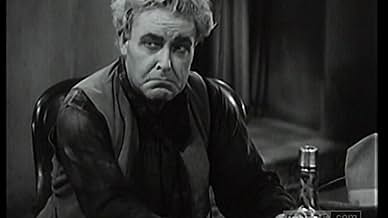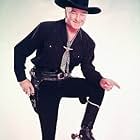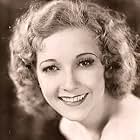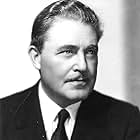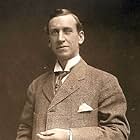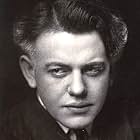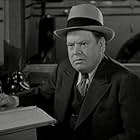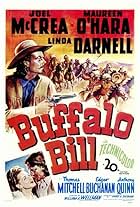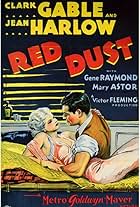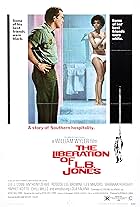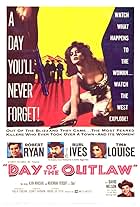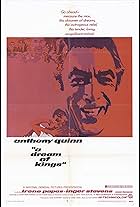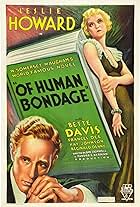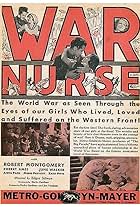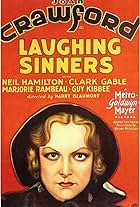Two men find an abandoned baby and fight over the ownership of the child, resulting in lifelong rivalry.Two men find an abandoned baby and fight over the ownership of the child, resulting in lifelong rivalry.Two men find an abandoned baby and fight over the ownership of the child, resulting in lifelong rivalry.
William Boyd
- Bill Holbrook
- (as Bill Boyd)
Edward Hearn
- Tex
- (as Guy Edward Hearn)
William Le Maire
- Denver
- (as William LeMaire)
Clem Beauchamp
- Miner
- (uncredited)
George Burton
- Santa Fe
- (uncredited)
Edgar Dearing
- Buck's Partner
- (uncredited)
James Donlan
- Steve - Ore Wagon #2 Shotgun Rider
- (uncredited)
- Directors
- Writers
- All cast & crew
- Production, box office & more at IMDbPro
Storyline
Did you know
- TriviaWilliam Boyd and Clark Gable, during the making of the film (11 October 1930), narrowly escaped serious injury from falling rock after two tons of explosives went off with considerably more force than planned in Dinosaur Canyon, some 70 miles northwest of Flagstaff, Arizona. While Boyd and Gable were 200 feet from the blast, rocks and boulders rained down between where they were standing. Not so lucky were a number of technicians, some 15 of whom were taken to hospitals in Flagstaff and Tuba City, and director Howard Higgin, who suffered a broken ankle and various cuts. The female lead, Helen Twelvetrees, had already returned to Los Angeles, as most of the principal photography was completed. Dynamite and black powder had been placed in the face of a 400-foot cliff and in an old mine tunnel, the explosion being expected to crumble the cliff. Unexpected presence of hard rock lent the blast violence that had not been anticipated, and showered rock and stone over an area of nearly half a mile.
- Quotes
Mary Ellen Cameron: Well, Dad, if they think they're going water cattle here tonight, here's two Winchesters who'll say they ain't!
- ConnectionsFeatured in Hollywood: The Great Stars (1963)
Featured review
THE PAINTED DESERT (Pathe, 1931), directed by Howard Higgin, stars William Boyd, billed simply as Bill Boyd, in a slightly atypical western story set in the landmark territory of Arizona. For Boyd's first western which has nothing to do with sand painting, it was his introduction to a genre for which he become famous. Before achieving fame and popularity as "Hopalong Cassidy" on both screen (1935-1948) and later TV series (1952-54), Boyd was a blond-haired actor assuming all sorts of character parts since the silent era of the 1920s. For THE PAINTED DESERT, Boyd was the center of attention, supported by notable veteran silent screen actors as J. Farrell MacDonald and William Farnum, along with Helen Twelvetrees, the only female credited in the cast. In later years, however, it's earned the reputation as being the early screen appearance of future major star, Clark Gable, who's strong presence and distinctive voice helped rise above the level of being just another mediocre outdoors western.
The ten minute prologue begins with an written diary passage which reads, "Feb. 25 ... Four months since we headed west into the Painted Desert, about sundown today, we come to a deserted camp." Jeff Cameron (J. Farrell MacDonald) and "Cash" Holbrook (William Farnum), are introduced as two prospecting pals who encounter an abandoned covered wagon. Inside they find a baby boy, the sole survivor of a possible massacre. Jeff asks, "Give me a hand with the boy." Cash replies, "You know I will." While the infant initially brings the two men closer together in roles as father figures, he also splits them apart when one claims custody of the boy. With Jeff wanting to name the infant, "Daniel Boone Cameron," it's Cash who takes "Buffalo Bill Holbrook" as his own, thus starting a lifelong feud between two best friends. Next diary passage: "Well, looks like after all these years, me and "Cash" Holbrook was coming to a showdown. He's had all the luck, but he ain't never going to get this water hole." For the rest of the story, Cash, who has converted the land around the water hole into a cattle ranch, has raised Bill on his own son while Jeff, now a widower, has raised his daughter, Mary Ellen (Helen Twelvetrees). The Carters soon encounter a stranger, Rance Brett (Clark Gable), drinking water on their property. Brett, from Montana, heading for New Mexico way, having lost his horse, is stranded. Becoming attracted to the presence of Mary Ellen, Brett stays, becoming partners with Cameron. As for the adult Bill Holbrook (Bill Boyd), having been educated in mining school, finds himself ordered from home by his adopted dad for creating a cattle stampede that was, in Bill's point of view, to keep both Holbrook and Cameron from killing each other. As Bill vies for the attention of Mary Ellen from Brett, he assists Jeff with his Cameron Mine Company. Problems arise when vicious rumors about Jeff and Cash spread around town, causing Bill going through extremes to end this feud before it's too late.
Slow pacing with lack of underscoring quite common in 1931 talkies, the proposed original screenplay by Howard Higgin and Tom Buckingham breaks away from traditional western form of staged Indian massacres, bank robberies, chase scenes on horseback or extended bar room brawls and dancing saloon gals in favor of "Romeo and Juliet" courtship prevented by family rivalry, in this instance, two fathers. Granted there's typical comedy relief thrown in for good measure, one acted by old geezer Charles Sellon as the gossiping Tonopah, and another briefly played by former Mack Sennett comedy player by the name of Al St. John as Buck. One great advantage THE PAINTED DESERT has is the fine use of black and white photography for its location scenery of the badlands and mountain view of the Painted Desert.
Though the leading players occasionally act their roles in low-key manner, it's the up-and-coming Clark Gable who plays his part with natural conviction. Though Gable westerns were few and far between, it was that same genre that marked the end of his thirty year movie career with John Huston's THE MISFITS (United Artists, 1961). His presence with unshaven face, high hat, rolling of cigarettes and horseback riding are enough to draw attention whenever he's on, especially the confrontation sequence between he and Bill Boyd that would be clipped as part of the many Gable movies inserted into the 1968 documentary narrated by Burgess Meredith titled "Dear Mr. Gable" (ABC television network.
Close to being forgotten, THE PAINTED DESERT earned its rediscovery during the wake of home video in the early 1980s with VHS cardboard boxes using either still photos of Clark Gable (giving the impression that he was the star) or of Gable and Boyd's face-to-face confrontation on the package. Some prints consist of its sold to television Movietime introduction logo in place of the original Pathe Studios presentation while all prints clock at 75 minutes as opposed to 80. THE PAINTED DESERT did have its share of television broadcasts in the late 80s either public or local broadcasting systems, usually during the after midnight hours, before commonly found on cable television's American Movie Classics (prior to 1999) and Turner Classic Movies, especially during some of its Clark Gable tributes.
Contrary to sources indicating the 1938 release of PAINTED DESERT (RKO Radio) starring George O'Brien as being a remake. The title and setting may indicate the same, but story and character names are overall different, bears no connection whatsoever with the earlier but slightly better western package. Will William "Bill" Boyd make good as a movie cowboy? You know he will. (**)
The ten minute prologue begins with an written diary passage which reads, "Feb. 25 ... Four months since we headed west into the Painted Desert, about sundown today, we come to a deserted camp." Jeff Cameron (J. Farrell MacDonald) and "Cash" Holbrook (William Farnum), are introduced as two prospecting pals who encounter an abandoned covered wagon. Inside they find a baby boy, the sole survivor of a possible massacre. Jeff asks, "Give me a hand with the boy." Cash replies, "You know I will." While the infant initially brings the two men closer together in roles as father figures, he also splits them apart when one claims custody of the boy. With Jeff wanting to name the infant, "Daniel Boone Cameron," it's Cash who takes "Buffalo Bill Holbrook" as his own, thus starting a lifelong feud between two best friends. Next diary passage: "Well, looks like after all these years, me and "Cash" Holbrook was coming to a showdown. He's had all the luck, but he ain't never going to get this water hole." For the rest of the story, Cash, who has converted the land around the water hole into a cattle ranch, has raised Bill on his own son while Jeff, now a widower, has raised his daughter, Mary Ellen (Helen Twelvetrees). The Carters soon encounter a stranger, Rance Brett (Clark Gable), drinking water on their property. Brett, from Montana, heading for New Mexico way, having lost his horse, is stranded. Becoming attracted to the presence of Mary Ellen, Brett stays, becoming partners with Cameron. As for the adult Bill Holbrook (Bill Boyd), having been educated in mining school, finds himself ordered from home by his adopted dad for creating a cattle stampede that was, in Bill's point of view, to keep both Holbrook and Cameron from killing each other. As Bill vies for the attention of Mary Ellen from Brett, he assists Jeff with his Cameron Mine Company. Problems arise when vicious rumors about Jeff and Cash spread around town, causing Bill going through extremes to end this feud before it's too late.
Slow pacing with lack of underscoring quite common in 1931 talkies, the proposed original screenplay by Howard Higgin and Tom Buckingham breaks away from traditional western form of staged Indian massacres, bank robberies, chase scenes on horseback or extended bar room brawls and dancing saloon gals in favor of "Romeo and Juliet" courtship prevented by family rivalry, in this instance, two fathers. Granted there's typical comedy relief thrown in for good measure, one acted by old geezer Charles Sellon as the gossiping Tonopah, and another briefly played by former Mack Sennett comedy player by the name of Al St. John as Buck. One great advantage THE PAINTED DESERT has is the fine use of black and white photography for its location scenery of the badlands and mountain view of the Painted Desert.
Though the leading players occasionally act their roles in low-key manner, it's the up-and-coming Clark Gable who plays his part with natural conviction. Though Gable westerns were few and far between, it was that same genre that marked the end of his thirty year movie career with John Huston's THE MISFITS (United Artists, 1961). His presence with unshaven face, high hat, rolling of cigarettes and horseback riding are enough to draw attention whenever he's on, especially the confrontation sequence between he and Bill Boyd that would be clipped as part of the many Gable movies inserted into the 1968 documentary narrated by Burgess Meredith titled "Dear Mr. Gable" (ABC television network.
Close to being forgotten, THE PAINTED DESERT earned its rediscovery during the wake of home video in the early 1980s with VHS cardboard boxes using either still photos of Clark Gable (giving the impression that he was the star) or of Gable and Boyd's face-to-face confrontation on the package. Some prints consist of its sold to television Movietime introduction logo in place of the original Pathe Studios presentation while all prints clock at 75 minutes as opposed to 80. THE PAINTED DESERT did have its share of television broadcasts in the late 80s either public or local broadcasting systems, usually during the after midnight hours, before commonly found on cable television's American Movie Classics (prior to 1999) and Turner Classic Movies, especially during some of its Clark Gable tributes.
Contrary to sources indicating the 1938 release of PAINTED DESERT (RKO Radio) starring George O'Brien as being a remake. The title and setting may indicate the same, but story and character names are overall different, bears no connection whatsoever with the earlier but slightly better western package. Will William "Bill" Boyd make good as a movie cowboy? You know he will. (**)
- How long is The Painted Desert?Powered by Alexa
Details
- Runtime1 hour 19 minutes
- Color
Contribute to this page
Suggest an edit or add missing content


